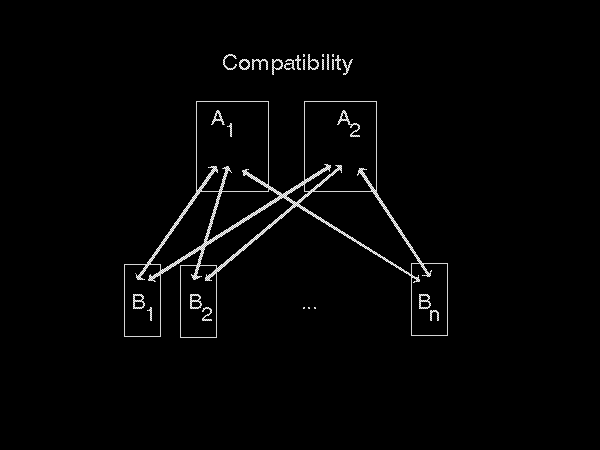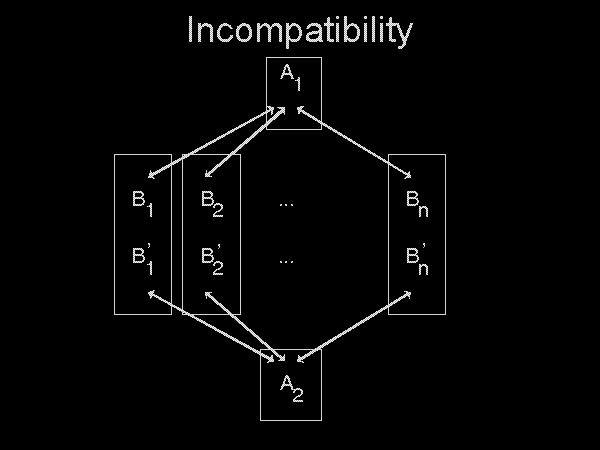
3.3.2 Changes in the Number of Varieties as a Result of Compatibility Decisions
Economides (1991b) considers the interplay of compatibility and the number of varieties of complementary goods. There are two types of goods, A and B, consumed in 1:1 ratio. There are two brands of good A, A1 and A2, each produced by an independent firm. The number of B-type brands, each also produced by an independent firm, is determined by a free-entry condition, so that industry B is in monopolistic competition. In a regime of compatibility, each B-type component is immediately compatible with either A1 or A2. In a regime of incompatibility, each brand Bi produces two versions, one compatible with A1 and one compatible with A2. The two cases are shown in Figures 9 and 10.

Figure 9

Figure 10
Under incompatibility, each B-type firm incurs higher fixed costs; it follows that ceteris paribus the number of B-type brands will be smaller under incompatibility. An A-type firm prefers incompatibility or compatibility according to the equilibrium profits it realizes in each regime. These profits, and the decision on compatibility, depends on the specifics of the utility function of consumers, and in particular on the impact of an increase of the number of varieties on utility. If industry demand is not sensitive to increases in the number of varieties of composite goods n (and does not increase much as n increases), then equilibrium profits of an A-type firm decrease in the number of firms; therefore profits of an A-type firm are higher at the smaller number of firms implied by incompatibility, and an A-type firm prefers incompatibility. Conversely, when consumers have a strong preference for variety and demand for composite goods increases significantly in n, equilibrium profits of an A-type firm increase in the number of firms; therefore its profits are higher at the larger number of firms implied by compatibility, and an A-type firm prefers compatibility.
Church and Gandal (1992b) and Chou and Shy (1990a,b,c) also examine the impact of the number of varieties of complementary (B-type) goods on the decisions of consumers to buy one of the A-type goods under conditions of incompatibility.